Satya Nadella’s 10 Biggest Statements At Microsoft Inspire 2021
‘We want to be the best partner for our partners,’ Nadella says. ‘What we are witnessing is a generational shift — not just in technology platforms, but in digital adoption curves. We have built the most trusted and comprehensive cloud to translate this structural change into opportunity for you as partners and maximize the value for our mutual customers.’
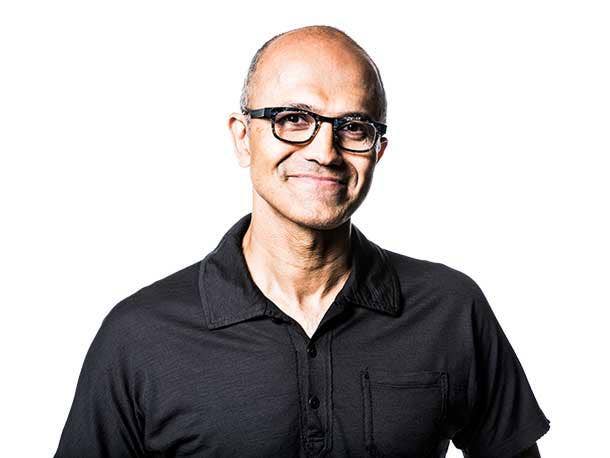
CEO Satya Nadella kicked off Microsoft Inspire on Wednesday with a “big thank you” to the technology giant’s 400,000 partners, calling them “the core to who we are and what we do as a company.”
“When it comes to our partners, we believe in two truths,” Nadella said during his keynote address of the technology and cloud computing provider’s partner conference. “First, we’re only successful if you are successful. That means creating new opportunity for you across every sector and every country. And second, we collectively are successful when the world around us is successful…Over the course of this pandemic, you’ve done the hard work to help the world use digital technology and get through one of the most challenging moments in modern history.”
Nadella announced a reduction in fees for Microsoft’s commercial marketplace – AppSource for business solutions and Azure Marketplace for IT solutions – to 3 percent from an “industry-standard” 20 percent for every transactable application published.
“This is our investment in your success, so you can invest more in your business and in your people,” Nadella told partners. “We want to be the best partner for our partners. What we are witnessing is a generational shift — not just in technology platforms, but in digital adoption curves. We have built the most trusted and comprehensive cloud to translate this structural change into opportunity for you as partners and maximize the value for our mutual customers.”
Software and digital technologies represent the most malleable and infinite resource to drive growth for the world, Nadella said, and Microsoft partners are helping customers navigate the rapid change by reimagining how people sample products, processing billions of federal Paycheck Protection Program loans, helping businesses adjust their supply chains — even flying drones on Mars.
“You have met every challenge and help others do the same,” Nadella said. “This partner ecosystem — all 400,000 of you — are projected to generate more than 10 million new jobs over the next four years alone. And for every $1 Microsoft generates, our partner ecosystem generates nearly $10 more. And, most importantly, the work we do together uplift the communities where we live and work.”
Here’s a look at Nadella’s other biggest statements from his keynote at Microsoft Inspire 2021, which is being held virtually for the second consecutive year.
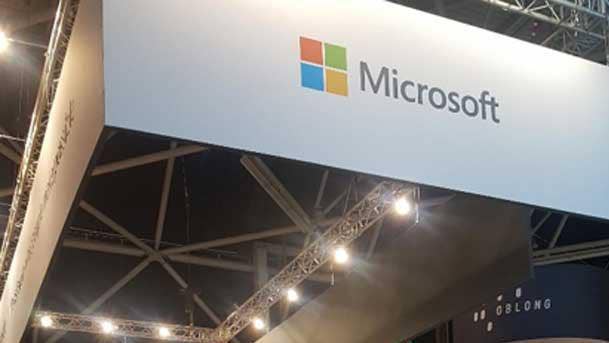
‘Greatest Structural Transformation’
The past year, while heartbreaking in many ways, was a catalyst and the beginning of an era of rapid change. We’re going through the greatest structural transformation in our economy in a generation. And while we aren’t going to be able to predict every tail event or challenge ahead, we know that digital technology will be key to resilience and transformation through whatever may come our way. There is no going back to digital adoption levels of two years ago — there’s only going forward. And this will require a step function change in the level of tech intensity in the years ahead. Every company will need to be a technology company in their own right. The solution areas you’re building upon were uniquely designed for this time, and they are your tools to help people, organizations and entire industries build their own digital capability.

A ‘Circuit’ Between The Microsoft Cloud And Partners
Our ambition is to foster foundational innovation that creates entire ecosystems even greater than the platforms themselves. That’s what the Microsoft cloud uniquely enables. There is a circuit between Microsoft cloud and your opportunity as our partners. If you’re an Azure partner today, you’re a Microsoft cloud partner. If you’re a Microsoft 365 partner, you’re a Microsoft cloud partner. If you’re a Dynamics 365 partner, you’re a Microsoft cloud partner. That’s because the Microsoft cloud is the most comprehensive and trusted cloud. No other cloud offers our breadth or our depth. The Microsoft cloud helps power every organization’s digital capability, while ensuring their independence and sovereignty over it. No other cloud offers this. And the Microsoft cloud is built on trust and security: trust in technology, trust in business model alignment. No other cloud offers this. And the Microsoft Cloud offers the best integration across the technology stack, while offering openness at every layer of the stack, ultimately improving time to value, reducing costs, increasing agility. No other cloud offers this.
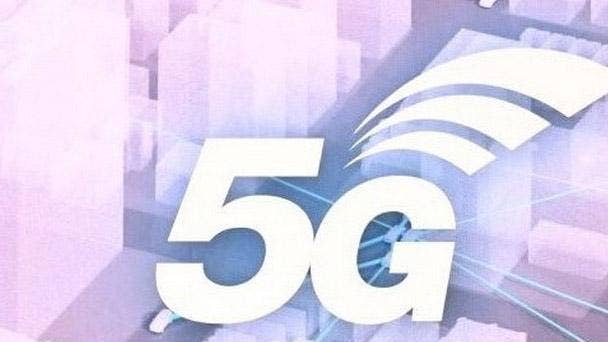
The Need For ‘More Ubiquitous And Decentralized Computing Power’
Coming out of this pandemic, one thing is clear: Every organization is going to need more ubiquitous and decentralized computing power. We are going through radical changes in the computing architecture — across the cloud, the edge — that will impact every business. Nearly 2 billion new connected devices will ship each year by 2023, up more than 50 percent from today. The data creation at the edge is growing almost as fast as in the cloud. The Microsoft cloud is the only cloud with the capabilities to support every organization’s multi-cloud, hybrid and edge needs in this environment. We’re building the world’s computer with more than 60 data center regions — more than any other cloud provider — and we’re not stopping there. We’re bringing the power of the cloud closer to where the data is generated.
Just take what’s happening with 5G. The network is getting virtualized — moving to the cloud, as you see with AT&T, who chose Azure to power its core 5G network. We’re also taking cloud compute to the edge with 5G deployments, enabling new scenarios like precision inventory tracking at ports and production lines that automatically adjust with demand. From Accenture to ASOCS, Celona, Cognizant, HCL and Tech Mahindra, we are working with partners to deliver these breakthrough capabilities for enterprises at the edge. Our partner template is building private mobile networks delivering reliable secure connectivity to isolated endpoints like container ships and offshore windmills. And in the UK, we’re partnering with the city of Milton Keynes to bring low-latency compute to an entire stadium, even powering autonomous shuttles within the venue.
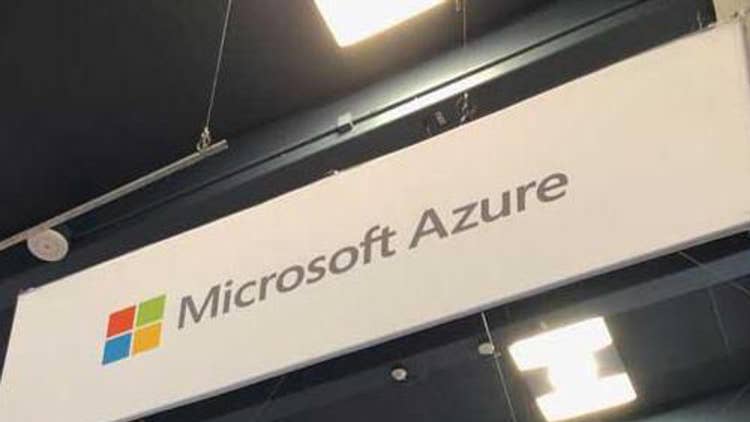
The Enterprise Metaverse
Let’s talk about the new layer of the infrastructure stack that’s getting created as digital and physical worlds converge: the enterprise metaverse. This platform layer brings together IoT, digital twins and mixed reality. With our metaverse stack, you can start with a digital twin — building a rich digital model of anything physical or logical, whether it’s assets, products or complex environments spanning people, places, things and their interactions. The digital twin is bound to the physical world in real time, so you can monitor the environment and collaborate within it using mixed reality. You can run simulations, you can apply AI to analyze and predict future states. In fact, (McLean, Va.-based confectionery and food manufacturer) Mars and Accenture are using our metaverse stack to digitize the supply chain and optimize production through complex digital simulations. And in France, public sector officials turned to our partners Cosmo Tech and (IRT) SystemX to model and simulate a region’s growth. They used Azure Digital Twins along with our data and analytic services to determine where new energy sources should be located and what impact they would have on the region’s electrical grid.
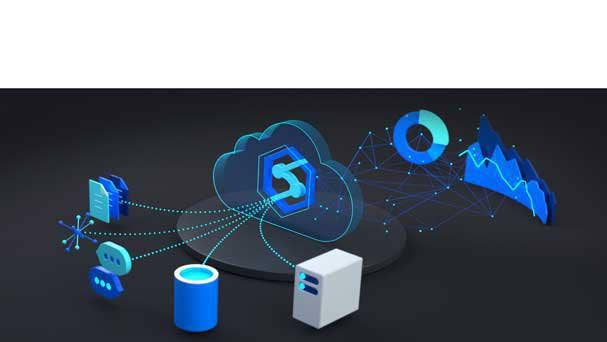
Data Sovereignty
(Data) is the most strategic asset for every organization, and every business needs to become digitally sovereign over their own data. We are generating data faster than we are able to understand it: From finance and retail to manufacturing and genomics, petabytes of data are being collected and processed each day. In fact, the amount of data created over the next three years will be more than the data that was created over the past 30 years. But too much of this data isn’t understood. It’s relegated to internal and external silos.
Every organization now has the opportunity to ensure their own data is being used for their benefit. Too many digital aggregators today have sophisticated game theoretic pricing and bundling strategies, where they end up taking your data and charging you to reach your own customers. The Microsoft cloud is the only cloud that helps you build sovereignty over your own data and your customer relationships. And Azure Synapse is at the core of this. It brings together data integration, data warehousing and big data analytics, giving you the freedom to query data on your terms at any scale.
It doesn’t stop there. With (Azure) Synapse Link, you can integrate your operational data stores on a real-time basis with your analytics stack. With Azure Machine Learning, you can build advanced AI models to identify trends and predict outcomes. With Synapse and Power BI, an entirely new generation of SaaS applications is being created. A great example of this deep integration is Dynamics 365 Customer Insights and Synapse. Going forward, every business will need to reimagine the entirety of its customer experience. This requires a 360-degree view of your customers with the ability to turn insights into action in real time.
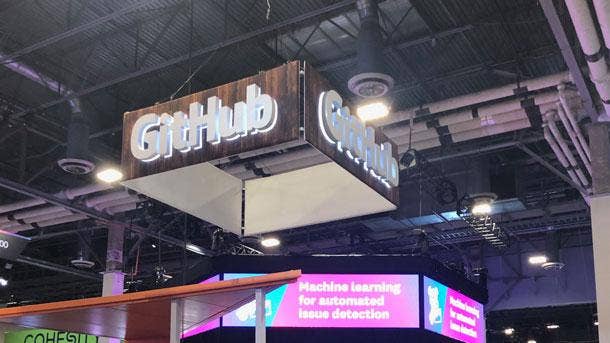
Surge Of Developers
We are experiencing a surge of developers across every industry and geography. In fact, the number of developers at non-tech companies is growing faster than at tech companies.
Students, teachers, data analysts and scientists have all seen rapid growth on GitHub over the past year. As every organization looks to build its own digital capability, they need to modernize existing apps, build new apps and have a standard way of doing both. And we know that application development, increasingly, it’s not just about pro developers, but includes domain experts, designers, marketeers, salespeople, customer service — all the other functions working together in these fusion teams. The Microsoft cloud is the only cloud that provides a developer tool chain for everyone — no matter the technical experience — across all platforms, whether it’s Azure, Windows or any other cloud or client platform.
From Visual Studio to GitHub, we have the most popular tools to help developers go from idea to code and code to cloud. Visual Studio has more than 25 million monthly active users, and GitHub is now home to nearly 65 million developers who use the platform to write code together. In fact, some of the most groundbreaking technological achievements of the past year are only possible because of the contribution of the open-source communities on GithHub. A community of nearly 12,000 developers on GitHub contributed to the software that made the Martian helicopter flight possible.
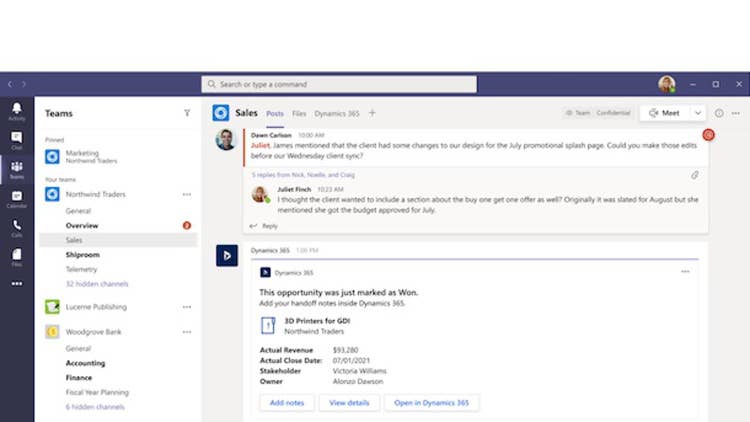
Collaborative Applications
I want to turn to one more category of apps that we believe will be increasingly critical to the success of every organization going forward: collaborative applications.
We are breaking down the silos between collaboration, communications and business process to help you create these applications for knowledge and frontline workers. There’s an amazing reinforcing circuit between Microsoft Teams, Power Platform, Dynamics 365 and your own applications that no other cloud offers. Think about what you can accomplish when you bring together people, communications and business process, and the impact you can have. A service engineer can fix customer issues faster, adding troubleshooting steps to the customer service case record directly in Teams, for example. Or a sales team member can close deals faster by understanding signals from the marketing department around demand generation.
Collaborative apps bring together everything people in organizations want and need to do their job directly in the flow of work. Already, we see ISVs including Adobe, AvePoint, C3.AI, Icertis and ServiceNow building collaborative apps to deliver rich experiences for their customers. And we’re going further with new connected experiences between Dynamics 365 and Teams. Over the past year, these two platforms have become increasingly integrated with new features that make it easier to securely access and search for Dynamics 365 records within Teams and to meet, chat and collaborate within Dynamics 365.
Organizations like Rockwell Automation are using these capabilities to enable their sales teams to make smarter decisions faster, providing better customer experiences. Today, I’m excited to share that Teams customers will receive access to Dynamics 365 data within Teams at no extra cost — regardless of whether they’re a Dynamics 365 licensee. Our ambition is to make it much easier for employees and external parties to share content and information and to create new opportunity for all of you.
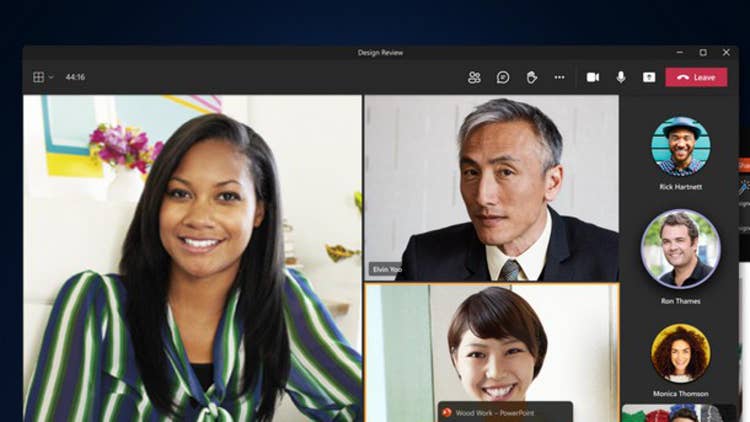
Hybrid Work
When we talk about structural change, hybrid (work) represents the biggest change to the way we work since the adoption of the nine-to-five workday over a century ago. It’ll require a new operating model. We will need to define productivity much more broadly — inclusive of collaboration, learning and well-being. All this needs to be done with flexibility and when, where and how people work. In our own research, the majority of the employees say they want more flexible remote work options but, at the same time, they also want more in-person collaboration. This is the hybrid work paradox. Everything from people practices to places to business processes will need to be reimagined. Hybrid work represents an enormous opportunity for all of you as every organization needs digital solutions to keep their people connected and thriving wherever they work from.
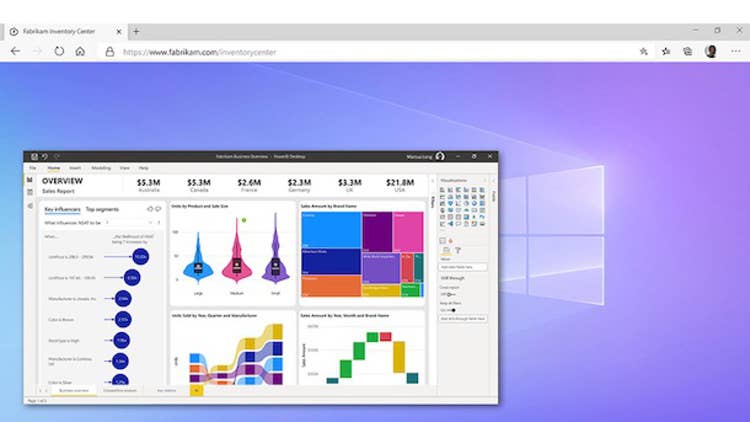
Windows 365
Today, we are…creating a new category with Windows: the cloud PC. I’m excited to announce Windows 365.
With Windows 365, we are making Windows available not just on Windows devices, but any device harnessing the power of the cloud. This has never been done before. Think about it: Just like applications were brought to the cloud with SaaS, we are now bringing the operating system to the cloud with Windows 365. With Windows 365, the operating system itself becomes hybrid — accessible on the device as well as the cloud. With just a few clicks, you can set up your cloud PC and stream the full Windows experience from the Microsoft cloud to a personal or corporate device. It’s that straightforward. And you can pick up right where you left off, because the state of your cloud PC remains the same even when you switch devices. In this new era of hybrid work, Windows 365 provides organizations — whether they’re a business of one or 1,000 — with greater flexibility and a secure way to empower their workforce to be more productive and connected regardless of the location.
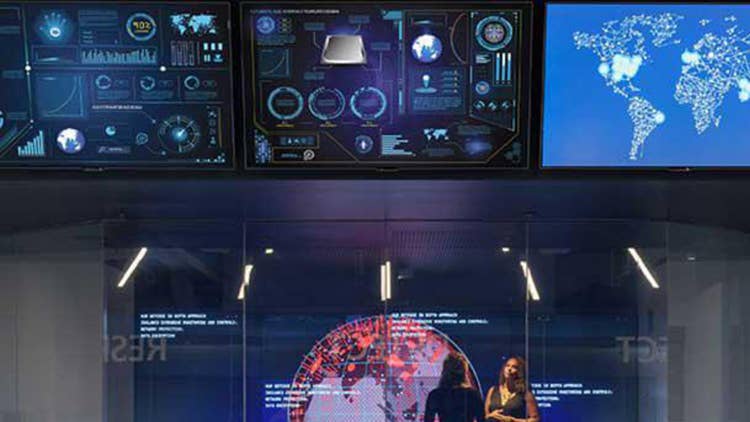
Trust And Security
Underlying everything we talked about today is trust. It’s the heartbeat of any business. Technology is so integral — to our lives, in our society, in our economy —that when it breaks, it’s not just about any one technology breaking or one company breaking. It impacts us all. No one wants to build technology that rapidly scales, but breaks the world around us. No customer wants to be dependent on a provider that sells them technology on one end and competes with them on the other.
And when it comes to cybersecurity, the threat landscape has never been more complex or challenging. We intercepted and thwarted a record 30 billion email threads and 31 billion authentication attacks last year, and are currently tracking 40-plus active nation state actors and over 140 threat groups. What differentiates our approach is organizing identity, security, compliance, as well as device management, in an interdependent whole and extending protection to all data devices, identities, platforms and clouds. The Microsoft cloud is the only cloud with best-of-breed and best-of-suite security capabilities.
Our ambition is to help every organization adopt a zero-trust architecture, while also reducing the complexity cost and risk created by stitching together point solutions. We are recognized as a leading vendor in cybersecurity, with leadership positions in five Gartner (Magic Quadrants) and seven Forrester Waves. More than 400,000 customers use our offerings, and behind each of them are partners helping build, implement, integrate solutions that tighten the customer’s security perimeter.